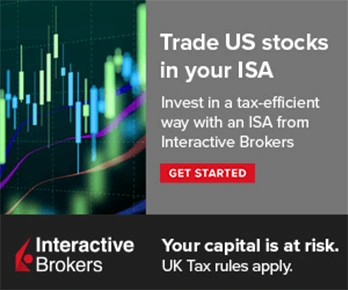Kotak is launching a new open-ended index fund — Kotak Nifty Top 10 Equal Weight Index Fund, aimed at replicating the performance of the Nifty Top 10 Equal Weight Index (TRI). The fund will invest in the top 10 stocks from the Nifty 50, selected based on their 6-month average free-float market capitalization, with equal weight given to each stock. The objective is to generate returns in line with the underlying index, subject to tracking error. Units will be available for subscription and redemption at NAV-based prices on all business days, and listing is not mandatory since it’s an open-ended scheme.
| NFO Details | Description |
| Fund Name | Kotak Nifty Top 10 Equal Weight Index Fund – Direct (G) |
| Fund Type | Open Ended |
| Category | Other Schemes –Index Funds |
| NFO Open Date | 07-April-2025 |
| NFO End Date | 21-April-2025 |
| Minimum Investment Amt | ₹100/- |
| Entry Load | -Nil- |
| Exit Load |
-Nil- |
| Fund Manager | Mr. Abhishek Bisen |
| Benchmark | Nifty Top 10 Equal Weight Index (Total Return Index(TRI) |
Investment Objective and Strategy
Objective:
The investment objective of the Kotak Nifty Top 10 Equal Weight Index Fund – Direct (G) is to provide returns that, before expenses, corresponding to total returns of the securities as represented by the underlying index, subject to tracking errors. However, there is no guarantee or assurance that the investment objective of the scheme will be achieved.
Investment Strategy:
To achieve the investment objective, the Kotak Nifty Top 10 Equal Weight Index Fund – Direct (G) will follow passive investment strategy with investments in stocks in the same proportion as in Nifty Top 10 Equal Weight Index. The investment strategy would revolve around reducing the tracking error through regular rebalancing of the portfolio, taking into account the change in weights of stocks in the Index as well as the incremental collections/redemptions in the Scheme. Such rebalancing shall be done in accordance with timelines prescribed by SEBI from time to time. Index Scheme being a passive investment carries lesser risk as compared to active fund management. The portfolio follows the index and therefore the level of stock concentration in the portfolio and its volatility would be the same as that of the index, subject to tracking error. Thus, there is no additional element of volatility or stock concentration on account of fund manager decisions.
A small portion of the net assets will be held as cash or will be invested in debt and money market instruments (as mentioned under asset allocation section) permitted by SEBI/RBI including TREPS or in alternative investment for the TREPS as may be provided by the RBI, to meet the liquidity requirements under the Scheme. The Scheme may take an exposure to equity derivatives of constituents or index derivatives of the underlying index for short duration when securities of the index are unavailable, insufficient or for rebalancing at the time of change in index or in case of corporate actions, as permitted by SEBI from time to time. Derivative products are leveraged instruments and can provide disproportionate gains as well as disproportionate losses to the investor. Execution of such strategies depends upon the ability of the fund manager to identify such opportunities. Identification and execution of the strategies to be pursued by the fund manager involve uncertainty and decision of fund manager may not always be profitable. No assurance can be given that the fund manager will be able to identify or execute such strategies.
The risks associated with the use of derivatives are different from or possibly greater than, the risks associated with investing directly in securities and other traditional investments. The Scheme may use SLBM for earning additional income for the scheme with a lesser degree of risk. Scheme may invest in the units of Mutual Fund schemes of Kotak Mahindra Mutual Fund or any other Mutual Funds in terms of the prevailing SEBI (MF) Regulations. The measures mention above is based on current market conditions and may change from time to time based on changes in such conditions, regulatory changes and other relevant factors.
Check out other upcoming NFOs
Risk Associated with Kotak Nifty Top 10 Equal Weight Index Fund – Direct (G)?
Tracking errors are inherent in any index fund and such errors may cause the Kotak Nifty Top 10 Equal Weight Index Fund – Direct (G) to generate returns which are not in line with the performance of the Nifty Top 10 equal weight Index or one or more securities covered by / included in the Nifty Top 10 equal weight Index and may arise from a variety of factors. Delayed realizations, cash for redemptions can result into tracking error, including transactions costs of investments etc. The Scheme is subject to the principal risks described below. Some or all of these risks may adversely affect Scheme’s NAV trading price, yield, total return and/or its ability to meet its objectives.
1) The NAV of the units is closely related to the value of stocks that form a part of the benchmark index. The value of this will react to stock market movements and may result in changes in the NAV of units under the scheme. There could also be movements in the scheme’s NAV due to changes in interest rates, macro-economic and political developments and over longer periods during market downturns;
2) Tracking error may have an impact on the performance of the scheme. However, KMAMC will endeavorto minimize the tracking error through regular rebalancing of the portfolio.
3) The Scheme is a passively managed scheme and provides exposure to the benchmark and tracking its performance and yield. The Schemes performance may be affected by a general price decline in the stock markets. The Scheme invests in the stocks comprising the index regardless of their investment merit. The Mutual Fund does not attempt to take defensive positions in declining markets.
4) As the scheme proposes to invest not less than 95% of the net assets in securities comprising of Nifty Top 10 Equal Weight Index, any deletion of stocks from or addition to in Nifty Top 10 Equal Weight Index may require sudden and immediate liquidation or acquisition of such stocks at the prevailing market prices irrespective of whether valuation of stocks is attractive enough. This may not always be in the interest of unitholders.
5)The performance of the Nifty Top 10 Equal Weight Index will have a direct bearing on the performance of the scheme. Hence any composition change by virtue of weightage or stocks selection will have an impact on the scheme.6)Capital Gains
Impact: Investors who trade in Kotak Nifty Top 10 Equal Weight Index Fund may be subject to Long Term Capital Gains or Short Term Capital Gains. Investors are requested to consult their tax / legal consultants before investing in the scheme.
7) The scheme will attract provisions of take over regulations, if KMMF invests in more than 10% of the paid up capital of a company and therefore may result into tracking errors and / or may not be able to accept further subscription in the Scheme.
8) The Index reflects the prices of securities at a point in time, which is the price at close of business day on the stock exchange. The Scheme, however, may at times trade these securities at different points in time during the trading session and therefore the prices at which the Plan trade may not be identical to the closing price of each scrip on that day on the BSE / NSE. In addition, the Scheme may opt to trade the same securities on different exchanges due to price or liquidity factors, which may also result in traded prices being at variance, from BSE / NSE closing prices.
Market Risk and Volatility: Market risk is a risk is inherent to an equity scheme. Being a passively managed scheme, it will invest in the securities included in its Underlying Index.• Concentration / Sector Risk: Index Fund being a passive investment carries lesser risk as compared to active fund management. The portfolio follows the index and therefore the level of stock concentration in the portfolio and its volatility would be the same as that of the index, subject to tracking error. Thus, there is no additional element of volatility or stock concentration on account of fund manager decisions. The Risk Mitigation strategy revolves around minimizing the Tracking error through regular rebalancing of the portfolio, taking into account the change in weights of stocks in the Underlying Index as well as the incremental collections into / redemptions from the Scheme.• Liquidity Risks: As such the liquidity of some stocks that the scheme invests into could be relatively low. The fund will endeavor to maintain a proper asset-liability match to ensure redemption payments are made on time and not affected by illiquidity of the underlying stocks.
Credit Risk: Management analysis will be used for identifying company specific risks. Management’s past track record will also be studied. In order to assess financial risk a detailed assessment of the issuer’s financial statements will be undertaken.
Price-Risk or Interest-Rate Risk: The Scheme may primarily invest the debt portion of the portfolio in money market instruments, units of Liquid and Overnight schemes thereby mitigating the price volatility due to interest rate changes generally associated with long-term securities.
Risk of Rating Migration: The Scheme may primarily invest the debt portion of the portfolio in short-term money market instruments, units of Liquid and Overnight schemes thereby mitigating the risk of rating migration generally associated with long-term securities
Basis Risk: The debt allocation of scheme is primarily cash management strategy and such strategy returns are expected to reflect the very short term interest rate hence investment is done in short term debt and money market instruments.
Spread Risk: The Scheme may primarily invest the debt portion of the portfolio in short-term money market instruments, units of Liquid and Overnight schemes thereby mitigating the risk of spread expansion which is generally associated with long-term securities.
Reinvestment Risk: The debt allocation of scheme is primarily cash management strategy and such strategy returns are expected to reflect the very short-term interest rate hence investment is done in short term debt and money market instruments. Reinvestment risks will be limited to the extent of debt instruments, which will be a very small portion of the overall portfolio value.
Liquidity Risk: The Scheme may invest in government securities, corporate bonds and money market instruments. While the liquidity risk for government securities, money market instruments and short maturity corporate bonds may be low, it may be high in case of medium to long maturity corporate bonds. The Scheme may, however, endeavor to minimize liquidity risk by primarily investing the debt portion of the portfolio in relatively liquid short-term money market instruments, units of Liquid and Overnight schemes.
Kotak Nifty Top 10 Equal Weight Index Fund – Direct (G) is suitable for What type of Investors?
This product is suitable for Investors who are seeking Following:
• Long term capital growth,
• Return that corresponds to the performance of Nifty Top 10 Equal Weight Index, subject to tracking error.






